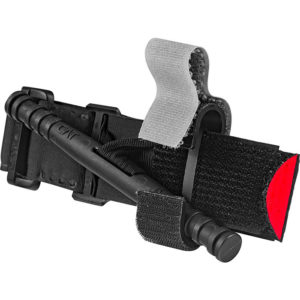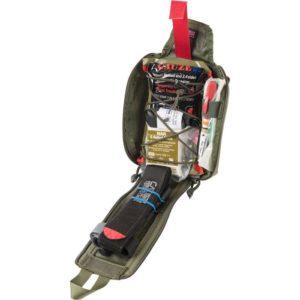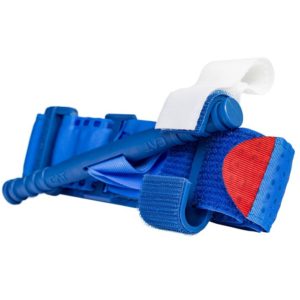The Proper Use of a Tourniquet

The Proper Use of a Tourniquet: A Comprehensive Guide
Introduction to Tourniquets
Tourniquets are life-saving devices that can control severe bleeding in emergencies. They work by applying pressure to a limb, cutting off blood flow to the injured area. Knowing how to use a tourniquet correctly is crucial for anyone in the wilderness or high-risk environments.
When to Use a Tourniquet
It’s important to recognize situations that require the use of a tourniquet. Only apply one in cases of severe bleeding that cannot be controlled by direct pressure alone. Examples include:
- Amputations: Complete or partial loss of a limb due to injury.
- Deep lacerations: Cuts that expose muscle or bone.
- Crushing injuries: Trauma that causes damage to blood vessels and surrounding tissues.
Types of Tourniquets
There are two main types of tourniquets: commercial and improvised. Commercial tourniquets are specifically designed for medical use and are highly recommended. Common commercial tourniquets include the Combat Application Tourniquet (CAT) and the Special Operations Forces Tactical Tourniquet (SOFTT). Improvised tourniquets can be made from materials like belts or strips of fabric, but they should only be used as a last resort when commercial options are unavailable. You can make a tourniquet in the field by ripping up a t-shirt and using a stick as the windless, but carrying a legitimate tourniquet is always the better choice.
Step-by-Step Tourniquet Application
Follow these steps to apply a tourniquet correctly:
- Expose the injury: Remove clothing or other obstructions from the affected limb.
- Select the tourniquet site: Place the tourniquet 2-3 inches above the wound, avoiding joints. Move the tourniquet closer to the torso if the injury is near a joint.
- Apply the tourniquet: Wrap it around the limb and secure it according to the manufacturer’s instructions.
- Tighten the tourniquet: Turn the windlass or adjust the strap until the bleeding stops. This may be painful, but saving the person’s life is necessary.
- Secure the windlass: Lock the windlass in place, ensuring it will not come loose during transport.
- Monitor the tourniquet: Continuously check the tourniquet to ensure it remains effective and adjust as necessary.
- Document the time: Write the time of the tourniquet application on the device or the patient’s skin to inform medical personnel.
The film, Wilderness Medical, is an excellent resource that teaches tourniquet usage and many other life-saving methods. This course is 4+ hours long!!
Tourniquet Removal and Aftercare (proper use of a tourniquet)
Only remove a tourniquet with proper medical training. Once applied, it should only be removed by a qualified medical professional in a controlled setting. Sudden blood flow back into the injured area can cause complications, including shock and tissue damage.
Potential Complications and Risks
While tourniquets save lives, there are some risks associated with their use. These include:
- Nerve damage: Prolonged nerve pressure can result in temporary or permanent damage.
- Tissue damage: Extended tourniquet use can cause tissue death due to lack of blood supply.
- Incorrect application: Failure to apply a tourniquet correctly can lead to increased blood loss or further injury.
To minimize these risks, it is crucial to be educated on proper tourniquet use and follow the guidelines outlined in this article.
Tourniquet Training and Preparedness for the proper use of a tourniquet
To be prepared for emergencies, it’s essential to receive proper training on tourniquet use. Many organizations offer wilderness first aid and trauma care courses, including tourniquet application instruction. Familiarize yourself with the following aspects of tourniquet use:
- Tourniquet selection: Understand the differences between commercial and improvised tourniquets and when to use each type.
- Technique: Learn how to apply a tourniquet correctly by practicing on a mannequin or a fellow trainee.
- Risk management: Know the potential complications and how to minimize them during tourniquet application.
- Emergency response: Develop a plan for handling severe bleeding incidents in the wilderness or other remote settings.
- How long can you keep it on?: Two hours or less, and no more than 6 hours. Before the 2-hour mark, you can attempt to downgrade a tourniquet with wound packing and pressure dressing, but you should not attempt this unless you will not be able to get to a hospital in a timely manner.
Essential Tourniquet Tips
To ensure the most effective use of a tourniquet, keep the following tips in mind for the proper use of a tourniquet:
- Carry a commercial tourniquet: Always have a commercial tourniquet on hand during wilderness outings or high-risk activities.
- Keep the tourniquet accessible: Store it in an easy-to-reach location to quickly access it in an emergency.
- Regularly inspect your tourniquet: Check your tourniquet for wear and tear or damage, and replace it as needed.
- Practice makes perfect: Continuously review and practice your tourniquet application skills to maintain proficiency.
- Training Tourniquet: Never Practice with the Tourniquet you will be carrying! Only practice with a tourniquet that you specifically designate for training.
Conclusion
The proper use of a tourniquet is a vital skill for anyone venturing into the wilderness or engaging in high-risk activities. Understanding when to use a tourniquet, choosing the appropriate type, and applying it correctly can save a life in a severe bleeding emergency. Invest time in proper training and regularly practice your tourniquet application techniques to stay prepared for any situation.
Need a Trauma Kit or Standard First Aid Kit? You can check out our selection HERE. Don’t forget to take a look at our partner, Global Rescue. This company provides medical evacuation worldwide, and its membership program is amazing.





